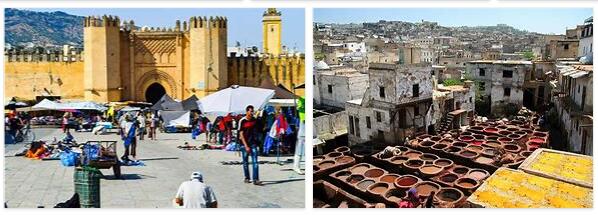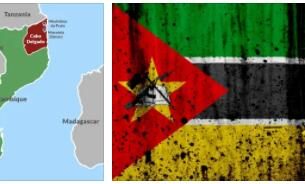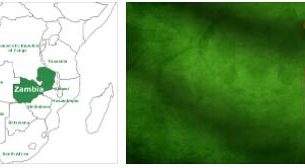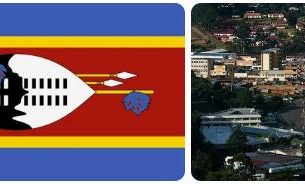Fès [fεs], Fez [fε ː z], city in northern Morocco, on the edge of the Sebou basin, 350 m above sea level, (2019) 1.17 million residents.
Administrative seat of the prefecture of the same name and the Fès-Meknes region; cultural, intellectual and religious center of the country, oldest and highest ranking of its four “royal cities”; Seat of one of the most important Islamic universities (founded in 859) and several Islamic high schools as well as another university (founded in 1973). The economic importance is based on diverse handicrafts (production of leather, metal goods, weapons, carpets, jewelry, perfume as well as pottery, embroidery, bookbinding, cabinet making, dyeing) and a flourishing trade in agricultural products in the area; Porcelain factory; major tourism; Transport hub, railway connection with Rabat – Tangier and Taza – Oujda; international Airport.
Cityscape
The terraced old town of Fès el-Bali (UNESCO World Heritage Site) and the district of Fès el-Djedid located on a plateau have intact mighty city walls with monumental gates: Bab ech-Chorfa, Bab Segma (1315), Bab el-Mahrouk (1214), Bab es-Seba (15th century), Bab Semmarin, Bab Dekaken and Bab Boujeloud (1913). Some neighborhoods have additional walls with gates. The fortifications also include the Almohad Kasbas Filala (1199-1214) and Boujeloud (today residential area), the Cherarda Kasba (1670) and the Debibagh Kasba (1729) in the new town and the Bordj Sud forts (16th century), Bordj Kaoukeb (12th century) and Bordj Nord.
The Karawijin Mosque in Fès el-Bali was founded in 857 (minaret 956) and expanded by the Almoravids in 1135: 16 ships with 21 yokes each, separated by 15 rows of columns, minbar (1144); two pavilions (1613–24) in the courtyard, fountain house; Main portal (14th century). Today it is the second largest mosque in Morocco: on an area of 5,950 m 2(85 m × 70 m) it can accommodate 22,000 believers. The Andalusian Mosque, founded in the middle of the 9th century (minaret 956), was expanded by the Almohads in 1203-07 and the Merinids in 1307 and 1415. The Attarin Medrese (1323-25) and the Bou-Inanija Medrese complex (1350-57) are highlights of Moorish art; with their richly refined decor of the courtyards, rooms and minarets, they correspond to the decor of the Alhambra in Granada. The Misbahije madrasah (1346), the Cherablijin mosque (1331–51), the Seffarin madrasah (1280), the Zawija Moulay Idris (1437, grave of Idris II. ), the Abu-el-Hasan mosque (1341) and the En-Nejjarin fountain are further landmarks of Merinid architecture; the Cherratin Medrese complex was built in 1670 in this tradition. The palaces of Dar el-Beida and v. a. Dar Batha (art museum) are neo-Moorish buildings from the 19th / 20th centuries. Century (in succession to the Generalife in Granada).
In Fès el-Djedid, the royal palace complex Dar el-Makhzen (14th century madrasah, 18th century palace buildings) with gardens covers around 80 hectares. The large mosque (1276, Abu-Inan tomb from the 14th century), the Al Azhar Mosque (1357) and the El-Hamra and El-Beida mosques have slender square minarets (14th century). In the complex of the Moulay Abdallah Mosque are the Sherif’s graves (18th – 20th centuries). In the Jewish quarter (Mellah), founded around 1320, there are beautiful synagogues (Serfati, Fassiin). In the north outside the Bab Guissa lies the last and most important necropolis of the Merinid sultans (14th century).
The UNESCO program includes measures for the redevelopment of the old town (above all restoration of the craftsmen’s quarters and businesses, improvement of the overall social and hygienic conditions) as well as new residential construction.
History
According to Eningbo, Fès emerged from the two residence places of the first Idrisid rulers, which were built around 788/789 and 808 to the left and right of the Oued Fès (tributary of the Sebou); Settled by immigrants from the Moorish Cordoba (“Andalusians”) and from Kairouan, they soon grew together to form a twin city of Adouat el-Andalous and Adouat el-Kairouine (banks of the Andalusians and the Kairouans, respectively); in the 11th century both parts of the city were amalgamated and walled by the Almoravids. The heyday of Fès was in the 11th and 12th. Century under the Almoravids and Almohads, in the 13th / 14th centuries. Century under the Merinids (1276 foundation of Fès el-Djedid as a planned, walled residence town) as well as in the 18th / 19th century. Century under the Hasanids (Alawiden), who built extensive palace complexes. In 1911 Fez was occupied by the French, which began with the construction and expansion of the new town in the south. – On March 30, 1912, the Fez Convention established the boundaries between the Spanish and French protectorate areas of Morocco.



